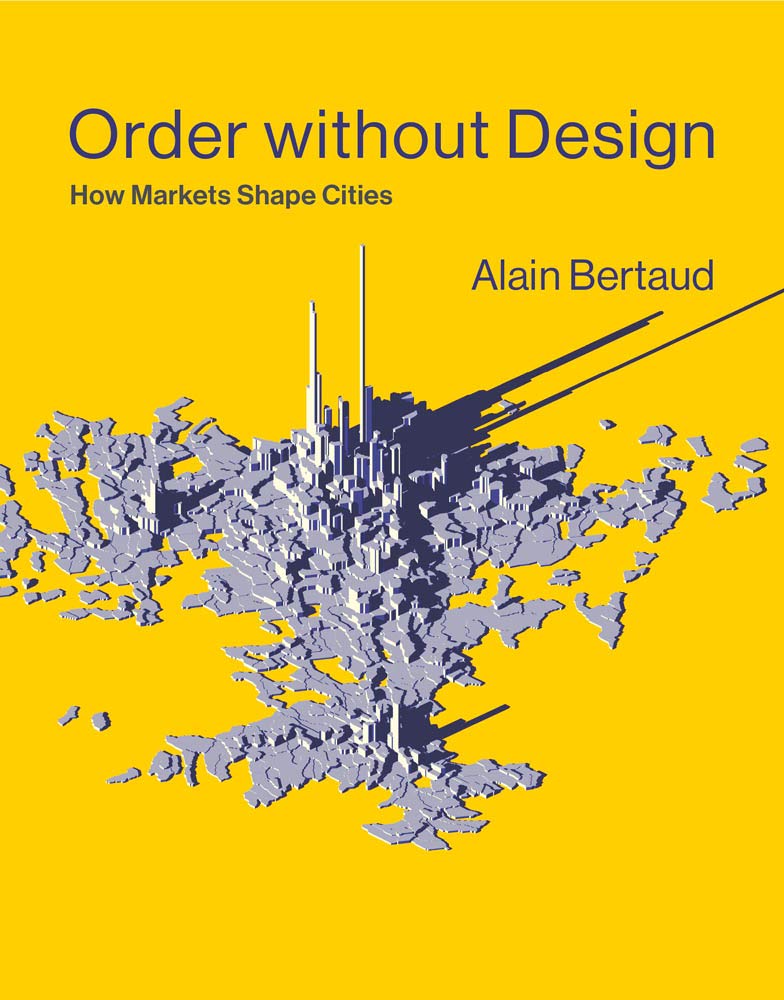Book Review: ‘Order Without Design,’ by Alain Bertaud
An Urban Planner Describes the Flaws of His Profession.
 Who should run cities, economists or urban planners? This is a trick question: the answer is that neither group can fully know how to run such complex systems. But if planner Alain Bertaud had to choose, he’d vote against his own profession.
Who should run cities, economists or urban planners? This is a trick question: the answer is that neither group can fully know how to run such complex systems. But if planner Alain Bertaud had to choose, he’d vote against his own profession.
In his recent book Order without Design: How Markets Shape Cities, Bertaud writes that planners have largely botched urban growth worldwide, and should approach it by using more insights from economics. For decades, Bertaud has trotted the world to study and help plan cities himself. He worked first for the United Nations, then the World Bank, then as a private consultant. He’s now a research scholar at NYU, where he’s learned from that school’s renowned economists.
Economics would be useful to planners, he writes, because it’s scientific. It uses technical, real-world data to create models on how cities behave, and how they would behave if given variables change. This means economists can better understand markets, predict outcomes, and determine best practices based on a defined set of goals.
Planners, by contrast, are “normative”, meaning they shape their premises not through empiricism, but norms and fads from their micro-culture. Their use of terms like “quality of life”, “neighborhood character”, “livability,” and “sustainability” are not technical, but derive from how they and their peers subjectively define these words. This means that planners depend on truisms and pseudo-science to shape policy.
One example Bertaud describes comes from his time spent in Port-au-Prince, Haiti, which in the 1970s was exploding in population, as rural Haitians migrated there to escape poverty. Bertaud was part of a team of U.N. bureaucrats who visited the city to advise on its growth. Many of his colleagues thought the growth should be dispersed nationwide, rather than concentrating in Port-au-Prince.
“At the time,” writes Bertaud, “planners were debating about the optimum size of cities, usually advocating for a size between half a million and a million people.”
Yet the economics literature had already debunked this notion. Economists back then were saying (as they do now) that cities get more productive the more they grow, due to agglomeration benefits, and there was no reason to cap population at one million people. Bertaud didn’t understand these benefits until he met an economist for the first time, while in Haiti. From then on, he became convinced that economists should have a bigger role in educating planners.
If that happened, planners would then be less prone to view cities as tabula rasas that should be designed based on their own cultural tastes, and more prone to view cities as what they actually are: labor markets. This “cities as labor markets” theory is the second big premise of Bertaud’s book.
A city’s fundamental raison d’etre is that it’s where people go to find jobs. Cities grow based on their ability to provide economic opportunity, and decline if that opportunity vanishes. The key role planners should play is not to choose which industries bolster these labor markets, but to set the conditions for growth, by allowing the development of housing and transportation that lets people access and expand these labor markets. Housing and transportation is where Bertaud thinks planners could better apply economic thinking. For example, rather than mandating zoning laws that are arbitrary and fixed, planners should observe the price signals in their markets, and use it as feedback to adjust the zoning. Every few years, zoning regulations should be subject to cost-benefit analyses, to ensure they’re accomplishing their stated goal, not just inflicting financial hardship and high home prices.
For transportation, planners should ignore their preconceived biases about the “right” transport modes and layouts, and instead focus on what will actually shorten commutes and improve mobility. This too can be done through price signals – namely tolls and congestion charging – that more efficiently delineate road space and ease traffic flow. Whether or not this leads to the overwhelming use of rails, buses, carpools or single-occupancy vehicles will vary by city, and depend on how those respective modes are priced.
One flaw of Order Without Design is that Bertaud never really defines “planner”, which causes him to isolate planners for unfair blame. Globally speaking, planners from the U.N. or federal governments may have power over land-use decisions. But in the U.S., policy is made less by professional planners—who graduated from planning schools and have AICP certification—than by politicians. The anti-economic thinking that drives our land-use policy is really more a reflection of the American people and who they vote for than of urban planners, who are largely powerless (if still misguided) advisors.
But the basic message of Bertaud’s book holds. Cities are often viewed and treated like aesthetic or cultural objects, rather than labor markets where people go to work. Their housing and transport grids are planned as such, ignoring this functional role of cities. Introducing economics to the urbanization process would help solve the problems now common in cities worldwide.
Image: The MIT Press
Catalyst articles by Scott Beyer | Full Biography and Publications
